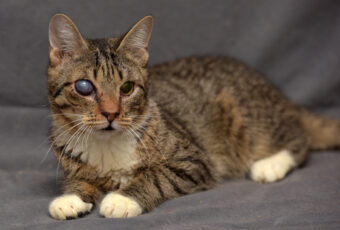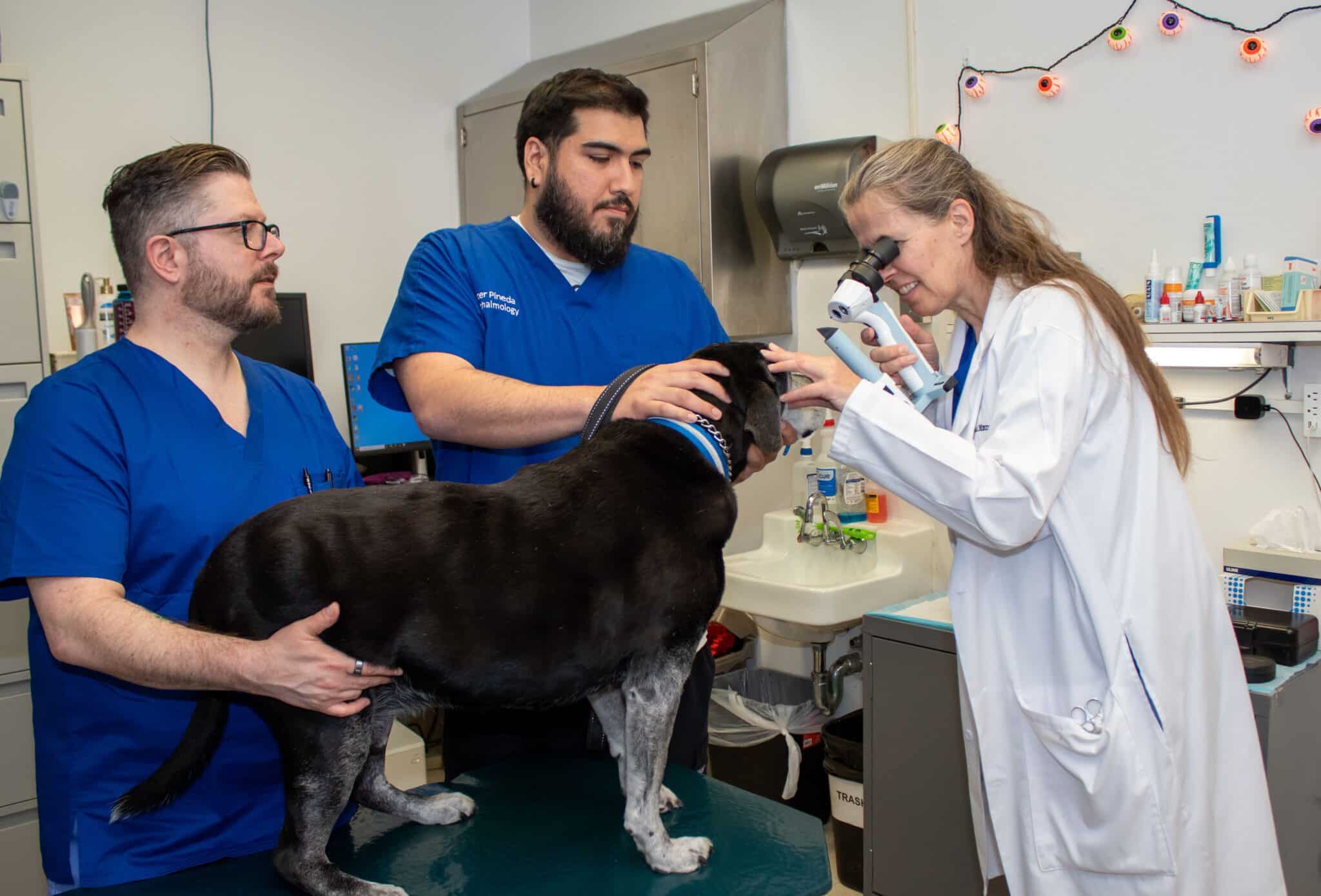Cataracts in Cats

Background
A cataract is a cloudiness within the lens of the cat’s eye. The lens of the eye works much like the lens of a camera, helping to focus on objects so the cat can see them clearly. When cataracts affect a big part of the lens, they cause vision loss and may lead to blindness.
Every cat experiences cataracts differently. A cataract may develop rapidly or over a period of time. There are four stages of cataracts:
- Incipient cataract is a small cataract that doesn’t interfere with vision. It typically occurs with age and often goes unnoticed. However, it can progress and become more significant.
- Immature cataract involves a larger part of the lens, which may start to affect vision.
- Mature cataract is when the cat’s entire lens is blocked by the cataract and there is no vision.
- Hypermature cataract is when the lens starts to shrivel up due to water and protein loss. In younger cats, some vision may return.
Risk Factors
The most common cause of cataracts in cats is chronic inflammation of the iris.
Signs
One of the more common signs is a change in the appearance of the eye. A healthy eye has a transparent pupil, while an eye with cataracts will have a cloudy white film covering part or all of the pupil.
Diagnosis
While cloudiness in a cat’s eye is the telltale sign of cataracts, it’s important to note that it can occur for other reasons as well. If your cat is older, the cloudiness may be due to nuclear sclerosis, which is the natural hardening of a cat’s ocular lens. Your veterinarian will likely refer you to a veterinary ophthalmologist, who specializes in eye diseases, to ensure your cat is diagnosed correctly. The following tests help confirm the diagnosis:
- Ultrasound to look for any issues in the back of the eye, such as retinal detachment
- Electroretinogram to test the function of the retina behind the cataract.
- Blood and urine tests to see if the cataract may be due to diabetes
Treatment
The only treatment for a cataract is to remove it through surgery. The cataract is removed using a method called phacofragmentation, which involves splitting the cataract into smaller pieces and removing the pieces through a very small cut in the cat’s eye. This surgery lets light reach the retina, allowing your cat to see again.
After the cataract is removed, a new lens, called an intraocular lens (IOL), is sometimes implanted to improve the cat’s vision further. If it is not possible to implant an IOL, your cat still will be able to see after surgery but will be farsighted.
If the surgery is successful and there are no issues, you will need to follow a strict routine to make sure your cat’s eyes heal properly. Your cat will need to rest for at least two weeks and wear an Elizabethan collar for three weeks so that she doesn’t scratch or irritate her eye. You will need to administer several types of eye drops at least four times a day and give additional medications orally. Your veterinary ophthalmologist will want to see your cat a number of times after surgery to make sure she is healing and there are no complications.
While it is a difficult process, the success rate for surgery is high, with nine out of ten cats having good (but not perfect) vision after recovering from surgery.
Surgery is not performed as frequently in cats as it is in dogs because cats often adapt very well to having one blind eye.
Prevention
It is important to schedule regular veterinary visits so that changes in your cat’s eyes will be caught as early as possible. If your cat has diabetes, treating the underlying condition may decrease the likelihood that cataracts will develop.
Webinar
AMC’s Usdan Institute for Animal Health Education event from August 2019: Alexandra van der Woerdt, DVM, Staff Doctor & Head of Ophthalmology at the Animal Medical Center offers insight into the signs, diagnosis, and treatment of cataracts in pets.
Make an Appointment






























